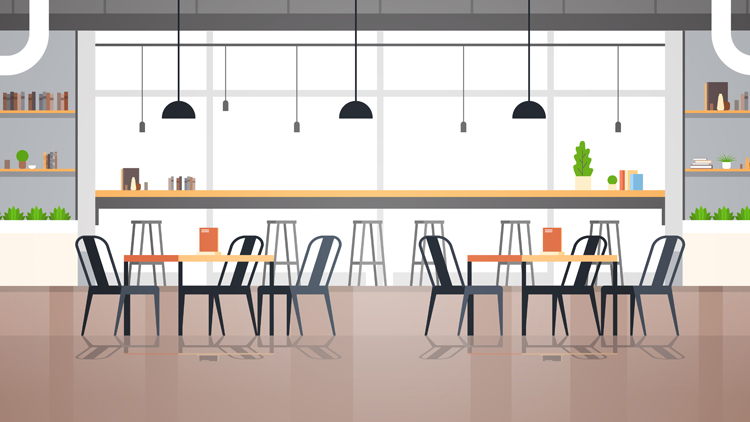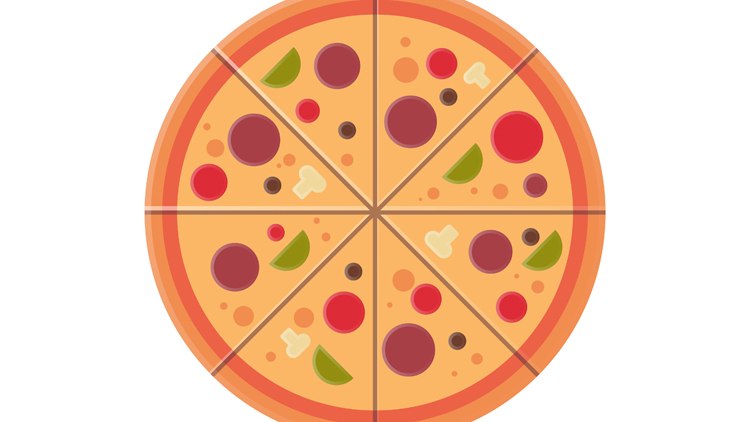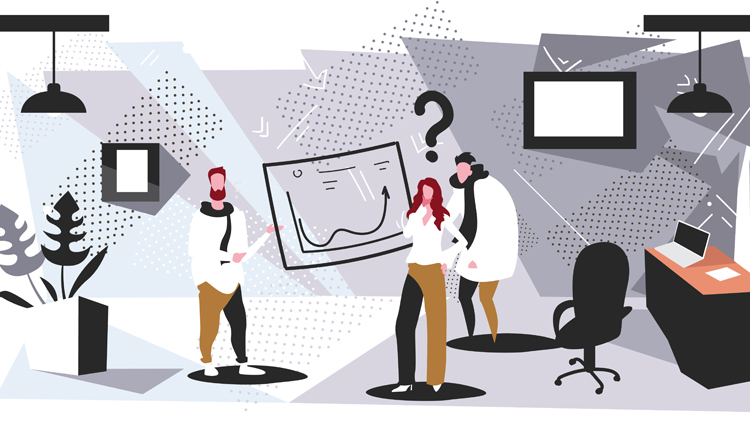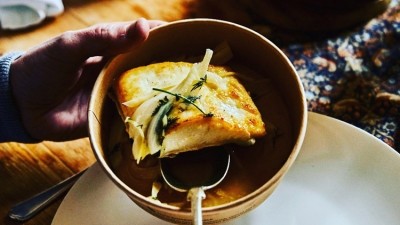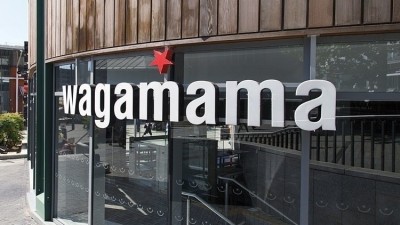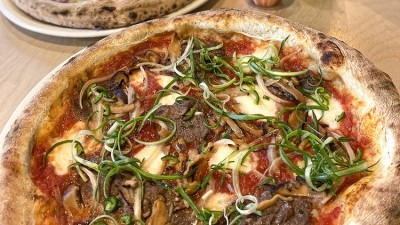What do the 2020s hold for restaurant delivery?
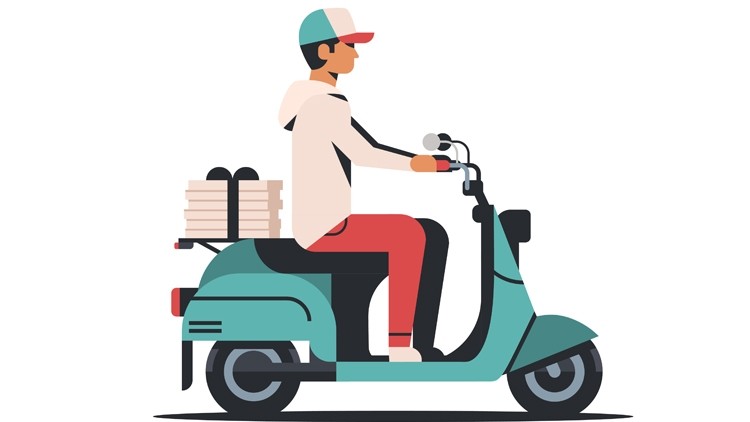
The restaurant food delivery sector has exploded over the past few years with third-party apps – most notably Deliveroo, Just Eat and Uber Eats – vying for business and reporting significant gains for those businesses using them.
As we enter a new decade, delivery doesn’t look like it’s going to go away any time soon, but what does the future hold for such businesses and the restaurants that are using them? We dish up some answers to the big delivery questions.
How big is delivery?
For many owners and customers delivery is an increasingly important feature of the modern restaurant industry. The 2018 MCA Foodservice Delivery Market Report valued the sector at £8.1bn, up 13.4% year-on-year, far outpacing growth in the eat-in market. Some 60% of restaurant-goers have used delivery in the past three months, according to a Retail Economics study for the British Takeaway Awards, and the sector could be worth a whopping £15bn by 2023 according to some projections.
There is still plenty of money to be made in putting bums o seats rather than boxes on bikes, however – the UK eating-out market is worth between £38bn and £80bn, depending on how you define it. But with Just Eat, UberEats and Deliveroo partnered with around 50,000 venues and major names piling in (Starbucks is rolling out with UberEats; Wagamama will open three delivery-only kitchens by late 2020), this once-marginal sector now constitutes 10% to 20% of the total foodservice market.
According to Uber Eats’ ‘Delivering Growth’ report, third-party platforms have increased the number of restaurant meals sold by over 4% in Paris and London and 1.5-2% in Madrid and Warsaw, helping restaurants sell a cumulative 1.6 million extra meals each week.
Independent restaurants in particular have benefited from the rise of third-party platforms, it claims, accounting for roughly half (729,000) of the extra meals sold. In addition, third-party platforms have also driven top and bottom line growth for the sector, it says, with Uber Eats reporting that restaurants in London saw the biggest increase in revenue and profit, up £323m (1.4%) and £189m respectively.
Does delivery put people off eating out?
In a 2017 Nectar survey, 43% of people said they ate out less after starting to use delivery apps (25% disagreed). In the 2018 MCA Foodservice Delivery Market Report, 27% of delivery users said they were staying in more. There is a sharp age divide: Nectar found 55% of people under-34 use delivery apps, compared with just 20% of 45-54 year-olds.
In MCA’s UK Restaurant Marketing Report 2019, insight manager Katherine Prowse describes younger consumers embracing delivery as a “threat”. Naturally, UberEats sees itself in a more positive light. “As more people rely on food delivery, we are helping restaurants navigate this change and discover new ways to grow their businesses,” says a spokesperson. “[Our] technology allows business owners to generate new customer demand, increase incremental revenue, drive operational efficiencies and utilise existing real estate.” Similarly, Deliveroo talks about strengthening UK restaurants and boosting individual operators’ turnover by up to 30%.
Does delivery cannibalise trade?
Is offering takeaway an additional income stream? Or will your regulars then visit less regularly? That is the great imponderable, and is the reason why many restaurants prefer to keep delivery as a marginal 10% of turnover, rather than pushing it hard. Owner of the Tampopo and East Street brands David Fox takes the view that ideally you want people in your restaurant. Failing that, if they stay home, better they eat your takeaway than another restaurant’s. “My view was that [delivery] was going to be a major disruptor and it’s better to be part of that than not.” Deliveroo sales run between 3% to 17% at his six venues. “But a lot of that might come on Sunday night.”
Could delivery companies become direct competition?
While managing director at Pho, Mark Smith said that given it controls customer data, has the couriers and runs a network of so-called ‘dark kitchens’, it is “common sense” that Deliveroo will begin to launch its own delivery-only restaurant brands. Last year, the deliver company did just that with the launch of a £5m investment fund to explore restaurant partnerships and create standalone brands. The latter generated the Nonna’s Square Pizza kitchens in Cambridge, Reading, Crouch End and Whitechapel. In Hong Kong, Deliveroo Food Market is a curious bricks ’n’ mortar hybrid: five delivery kitchens where customers can also order takeaway in person. Last year, a strategy document leaked to the Eater website elaborated on Deliveroo’s plans for own-brand kitchens which eventually, by using kitchen automation data to predict demand and drone or robot delivery, will be able to deliver low-cost meals in minutes. But that future is some way off.
What else are restaurateurs nervous about?
It is almost impossible to predict which delivery company will prove most durable and/or dominant, or where that will leave restaurateurs. Despite a 72% rise in sales in 2018, fast-expanding Deliveroo lost £232m. “They keep growing and growing and not making any money. It’s an incredible business model,” says MEATliquor co-founder Scott Collins. In October last year, the Competition and Markets Authority announced a formal investigation into Amazon’s role as lead investor in Deliveroo’s last £452m funding round. Amazon’s own UK restaurant delivery service closed after two years in 2018. This is uncharted territory, with many potential obstacles.
Government intervention in the gig economy on workers’ pay and employment status or local government acting decisively to limit dark kitchens could, for instance, cause the delivery model to be reformulated, stall or fail. “There might come a time when regulation comes down so heavily it doesn’t work,” says Simon Potts, MD of The Alchemist group. “If [delivery] pauses for a couple of months and it’s 30% of your trade, it’s not good.” That reliance on a third party also concerns Fox. “You’re completely at the behest of the Deliveroo algorithm, the riders, where you appear on their app,” he says. “It’s not a relationship most operators are comfortable with. If Deliveroo becomes 25% of your sales, are they going to be here in three years? You’re exposed. And if they are there, will they dictate a higher margin? They’re in the driving seat.”
How do the deals work?
Just Eat started as an online marketplace, an ordering and payment widget with individual takeaways delivering their own food. Now it employs couriers, too. Conversely, Deliveroo and UberEats have always provided a courier service, but now also offer marketplace listings, click ’n’ collect and self-delivery options. Delivery providers charge the customer a fee (£3.50 at UberEats), but also take a percentage of each transaction, depending on the service provided (30% for standard delivery at UberEats; 13% for its Bring Your Own Couriers option). Rates are negotiable. Hip and bigger brands can work out sub-20% commission deals. But, generally, such inducements are fixed-term and most operators will, these days, pay 25% to 30% commission.
Who has made delivery work?
Pizza companies have traditionally led the field in terms of delivery, but less obvious players are now taking a slice out of the delivery market. In 2017, Deliveroo claimed it brought an extra £460m to the eating-out sector. A Capital Economics report estimated that catalytic effect could be worth £1.5bn by 2019. Brands with easily transported, high-volume product, such as Tortilla, have prospered. One of Deliveroo’s top 10 most ordered brands in 2017, Tortilla has found itself designing sites around delivery – Bankside has a second delivery-only kitchen and its first ‘baby’ Tortilla in Putney is a small 700sq ft location designed for delivery. The brand is also now expanding into once marginal locations with high residential density where delivery thrives. Between 15% and 20% of Tortilla’s total sales are through Deliveroo, according to Tortilla MD Richard Morris.
In contrast, MEATliquor makes delivery work on its terms, treating the 10% to 30% it adds to revenue as a bonus; particularly at its Oxford Circus site where the kitchen is open until 2.30am. Collins says he negotiated a very good commission with UberEats and uses integrated PoS software that processes delivery orders with no manual input at the till and in the kitchen. He is steadfast about the menu (“We don’t deliver fries. They go soggy no matter what you do”), and turns delivery off at peak times. “We always prioritise restaurant service.” Collins has driven down costs and smoothed out the logistics but, he warns: “As a start-up you don’t have that streamlining tech and [delivery partners] are going to be charging you 25% upwards. Going in like that, I’d say, ‘no, fuck delivery’.”
In wake of the Coronavirus pandemic, restaurants that historically didn't do delivery have since started offering it, many during the Government-imposed lockdown that meant it was the only option for them to continue trading. Restaurant groups including Tonkotsu, Dishoom, Gunpowder, D&D, Cote and Pizza Express are all recent entrants into the delivery arena, with tech brands creating solutions to help them do it as quickly and easily as possible. Deliverect, which works with restaurant brands including Absurd Bird, Dishoom and Tonkotsu, helps connects restaurants to third-party delivery platforms such as Just Eat and Deliveroo via their EPoS systems, with restaurants able to adjust their menus quickly and effortlessly in order to test new dishes or remove those that are underperforming.
How is delivery reshaping customer expectation?
It may revolutionise the concept of choice. Deliveroo’s Food Market allows customers to order dishes from multiple menus simultaneously from its Editions kitchens. That is difficult to replicate in a restaurant. However, where it identifies market gaps, UberEats is advising owners on how they might profitably create virtual restaurants. For instance, an Indian restaurant might start making pizzas in spare kitchen space, selling them through an online-only brand. There are 1,000 virtual brands on the UberEats app which, like 24/7 delivery and its growing breakfast trade, reflects this shift to endless choice and flexibility.
What can go wrong?
There are significant hidden, time-consuming costs to this, above the standard ingredient, kitchen labour and delivery commission costs. Businesses have to test which dishes work for delivery; design and source packaging (which adds just over 5% to the cost of Pho’s dishes; its soups require eight packaging components); and administer and manage delivery. Even if you agree a delivery commission percentage on your net price (the amount you would keep on a sale, after tax), the margin is tight.
In June, when BBQ group Bodean’s closed one London site, owner Andre Blais said he was making a mere £1 in every £10 on delivery orders. Deliveroo says it encourages restaurants to always use the same pricing for delivery as they do for their in-house menus, but many operators feel compelled to charge more for delivery dishes. Businesses also have to factor in the impact of delivery on the morale of their staff, who often did not sign-up to cook and bag takeaway meals. Likewise, having delivery couriers hanging around in crash helmets can cause a bottleneck at reception and detract from the atmosphere and customer experience. Lay down clear rules on where and when couriers should wait, says Collins. “Keep pushing back and pushing back until regular drivers have got it.” It is for these reasons that operators talk of a sweet-spot of peripheral delivery sales, somewhere under 20%, where it adds revenue in quieter periods, without great risk or drawbacks. “Whatever number is chosen, it’s relatively arbitrary because the impact is partly financial, partly having to manage it, partly impact on your team and partly impact on your customers,” says Fox.
Could you claw back control with click 'n' collect?
For now, delivery providers lack the power to dictate how restaurants operate. From MEATliquor to Wagamama, many offer online click ’n’ collect via their websites and apps, alongside delivery. The advantages are multiple: restaurants retain the whole sale, customers may have a drink while they wait and, crucially, unlike delivery through a third party, it allows a restaurant to capture the customer’s data. The latest Zonal GO Technology report found that 22% of adults have used click ’n’ collect and another 22% find it appealing. In city centres with densely residential zones, where restaurants are built into apartment blocks, walking downstairs or across the street to collect a meal and avoid a delivery fee surely makes sense?
Is packaging problematic?
Will the post-millennial generation embrace delivery? In this #plasticfree era, only if it can reduce its waste packaging. Deliveroo recently launched a partnership scheme to wash and re-use plastic takeaway containers in Oxford and Cambridge. But could plant-based SpiceBox be the future? Newly crowdfunded with £275,000 on Seedrs, the Walthamstow-based Indian restaurant offers takeaway in reusable tiffin boxes rather than delivery.
Could a disruptor disrupt the disruptors?
Given the might of some of the big players, it seems unlikely that anyone is going to do something significant in terms of coming up against them. That doesn’t mean brands aren’t willing to give it a go. JP Then, owner of 14 London Crosstown Doughnuts outlets, has launched a delivery platform, Slerp, which gives operators control over customer data and integrates with independent couriers. Aimed at established brands that do not need a big promo push to attract online orders, it charges 7.5% to 10% commission. The courier’s fee is passed to operators that can add it on or absorb the cost.
Is a delivery presence a marketing tool?
Delivery accounts for 0.7% of food sales at The Alchemist. “Commercially, it’s nothing,” says Potts. Its delivery offer is rigorous but its presence on Deliveroo was primarily about making people aware that every Alchemist has a full-service restaurant. They are not just bars. Being on people’s phones and desktops was useful when the company was growing awareness through a number of channels, says Potts. Similarly, Collins says MEATliquor has harnessed the delivery function to raise wider brand awareness. “We use it as a mechanism to get people to sites,” he says. “We’ll stick information into the bags. There’s an astonishing amount of people that haven’t been to MEATliquor who are using [delivery].”
What does the future hold?
While in the early days of Deliveroo and Uber Eats some restaurant operators and commentators might have considered delivery to be a flash in the pan, received wisdom today is that it will be around for some time yet. Uber Eats is understandably bullish about the sector’s future, predicting the food delivery market will grow by 10% a year over the next three years. “I see [delivery] being here in five years' time,” says Potts. "The question is, whether they’ll be able to pay the riders enough, charge a delivery fee people are willing to pay and take a commission. Will they square that circle? I have no idea.”
Fox offers a more cautious view, and says he is resisting the temptation to increase his takeaway business despite predicted growth in the sector. As he puts it, drily: “How many takeaway owners retire to the Bahamas?
